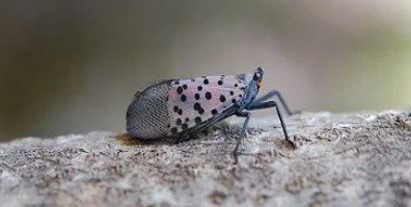- By Cathy Peterson
- Chimney Dangers, Chimney Inpection
- 0 Comment
What to Do When Stink Bugs and Lanternflies Get Into Your Wood-Burning Fireplace
As cooler weather arrives, many homeowners discover an unwelcome surprise: insects like stink bugs and spotted lanternflies making their way into the house through the chimney. Both pests are skilled at finding warm, sheltered spots to overwinter—and unfortunately, the chimney connected to your wood-burning fireplace is one of their favorite entry points.
If you’ve noticed them in your fireplace or creeping into your home, here’s what you should do to get rid of them and keep them out.
Why Bugs Enter Chimneys
Stink bugs and lanternflies are looking for one thing: warmth. As temperatures drop, they crawl into cracks, crevices, and openings to find protection. A chimney without a proper cap or with damaged masonry gives them an easy way inside.
Step 1: Don’t Light a Fire to Burn Them Out
When you see bugs inside your wood-burning fireplace, it may be tempting to start a fire as a quick fix. But this is not a safe or effective solution. Stink bugs release a foul odor when burned, and lanternflies can leave behind residue. Neither solves the root problem, and you may end up with odor and mess inside your fireplace.
Step 2: Remove Any Insects Safely
Vacuum them up using a shop vac (a disposable bag helps reduce odor afterward).
Avoid crushing stink bugs, as their smell is their main defense.
Dispose of lanternflies properly—they are invasive, and most state agricultural agencies encourage you to kill them rather than release them.
Step 3: Seal Entry Points
Once you’ve cleared the bugs, it’s time to stop them from coming back:
Install a chimney cap: A properly fitted chimney cap with mesh screening is the best defense against insects, animals, and debris.
Inspect your fireplace chimney for cracks: Check the crown, flashing, and mortar joints for small openings where insects can crawl through. Professional repairs may be needed.
Consider a top-sealing damper: This provides a tight seal when your wood-burning fireplace is not in use, adding protection against pests and drafts.
Step 4: Schedule a Chimney Inspection
A professional chimney sweep can identify where pests may be entering your fireplace chimney and recommend permanent solutions. Since insects often exploit missing caps, deteriorating mortar, or gaps, a yearly inspection ensures your fireplace is safe and pest-free before burning season.
Step 5: Exterior Prevention Tips
Limit exterior lighting at night—both stink bugs and lanternflies are drawn to lights.
Trim back tree branches near the chimney—they act as highways for bugs.
Use approved repellents—for lanternflies, sticky bands and sprays can help reduce populations near your home.
Keep Your Wood-Burning Fireplace Bug-Free
The best way to handle stink bugs and lanternflies in your wood-burning fireplace is to stop them before they get in. A simple chimney cap installation or seasonal inspection can save you from the nuisance of bugs and keep your fireplace ready for safe, cozy fires all winter long.
Contact Potomac Chimney & Masonry Services today—we’ll inspect, cap, and repair your wood-burning fireplace chimney to keep it protected year-round.

